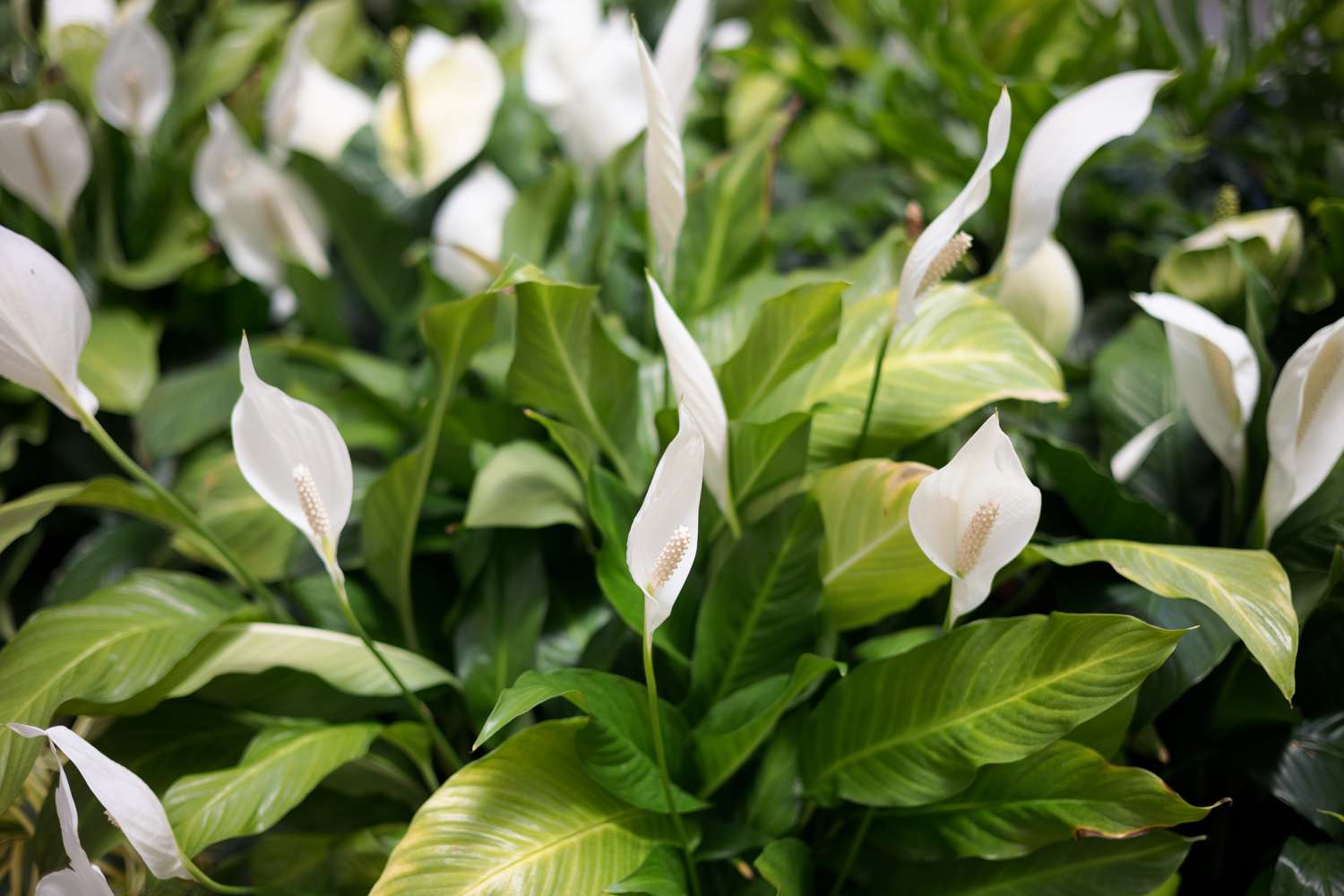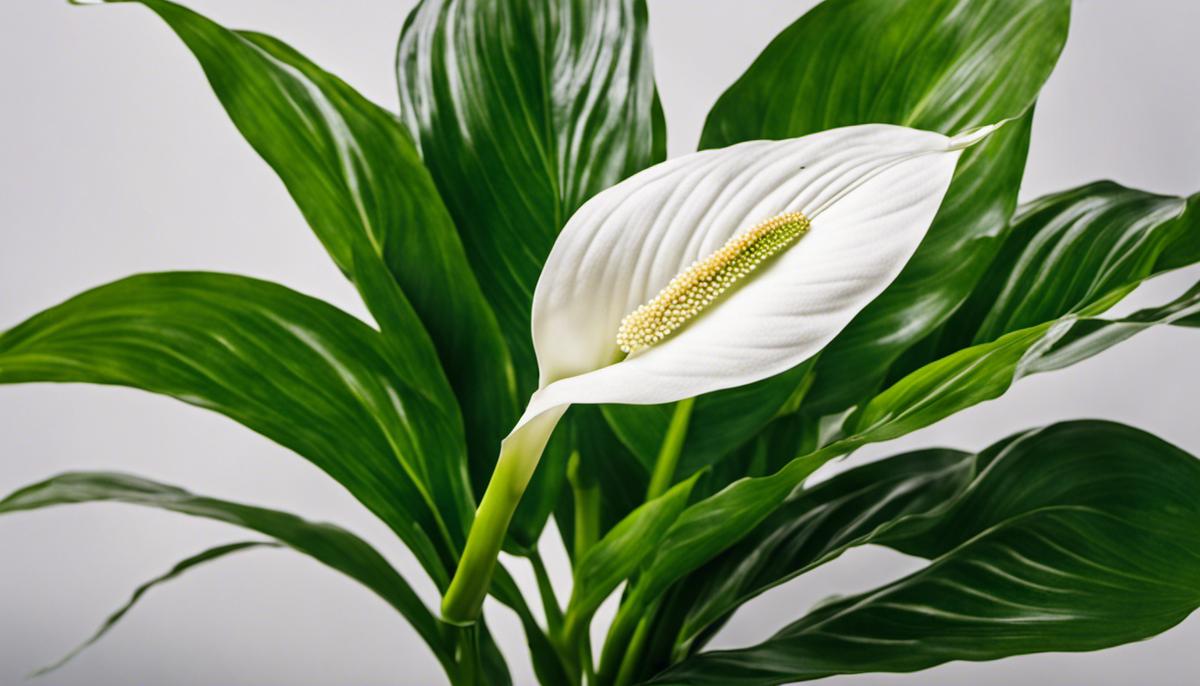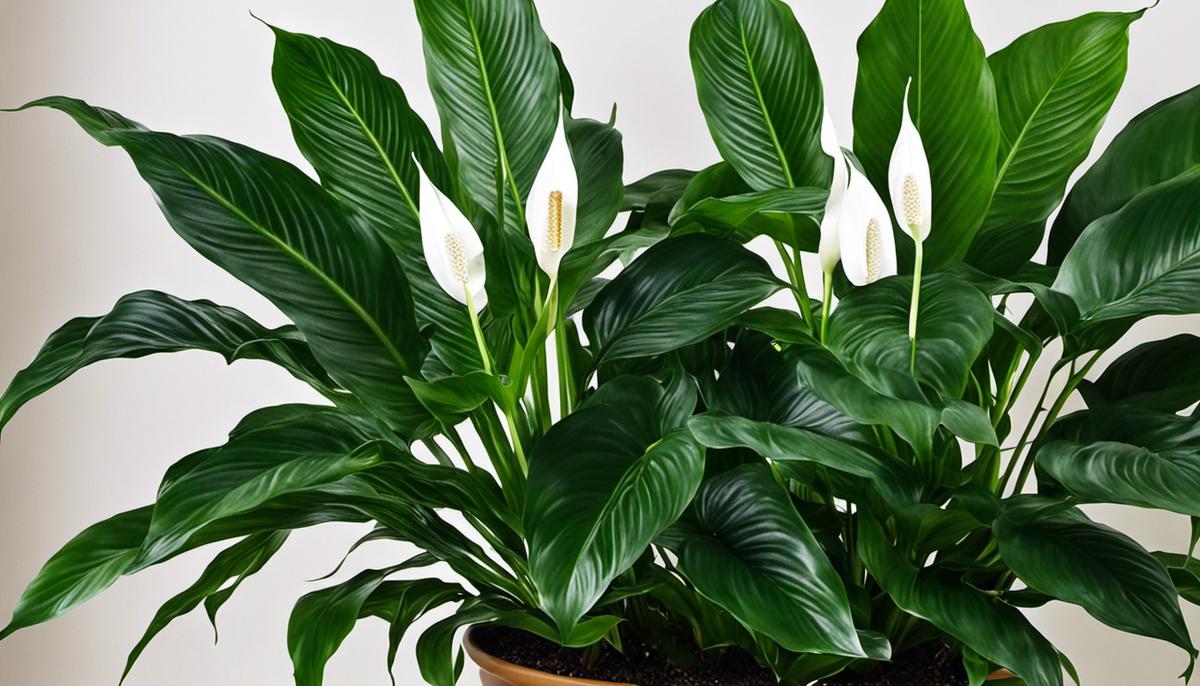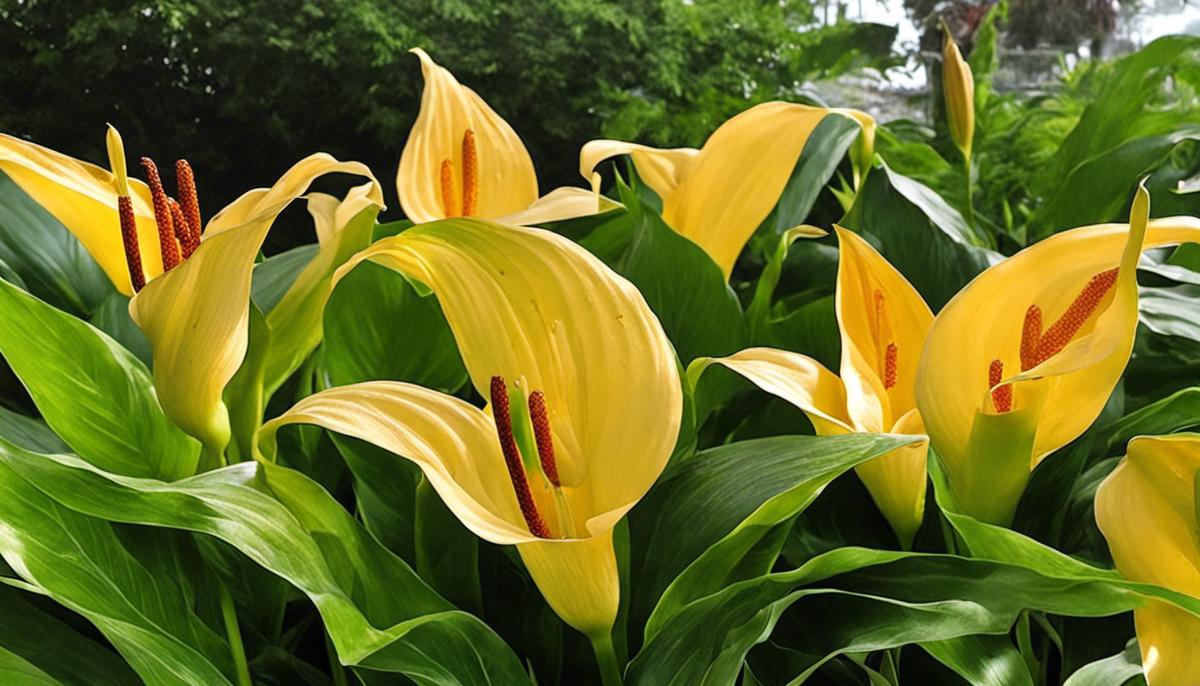
Peace Lily How to Care for It ♥
Description: Peace lily, One of the plants that everyone loves, as it spreads a sense of calm and is recommended by naturopathic doctors in Park City, Ute, and the author of the book Clean skin From Inside, as these powerful plants are considered aesthetically pleasing and happy and also benefit your health over time, and a study published in 2022 in the journal Applied Sciences, show that these plants have very important air-purifying properties and help remove carbon dioxide and volatile organic compounds from the air. Peace plants can live for years, constantly producing white flowers that resemble a white peace flag, and are easy to take care of and do not need a lot of light, so they are ideal for shaded spaces, and all you have to do is keep them out of the reach of pets and small children, As it can cause vomiting or swelling of the tongue if ingested. Delving into the world of indoor gardening allows one to experience the pleasure of nurturing life while enjoying the tranquility plants bring to a space. One such houseplant that many individuals admire for its lushness and easy maintenance is the peace lily. Known for its elegant green foliage and serene white blooms, the peace lily is a tropical plant that can significantly enhance your home's aesthetic appeal. This guide aims to provide vital information on the best practices and techniques to help your peace lily plant thrive, covering essential topics like the perfect environment, proper watering and fertilizing, and beneficial maintenance and troubleshooting practices. Every persistent plant nurturer understands that distinct plants come with their own character and grace! Among these charismatic botanical gems, Peace Lilies hold a special place due to their delicate blooms and lush, dark green foliage, which incredibly purifies indoor air. To make sure this exotic plant thrives, it's crucial to provide them with the best possible environment. The Peace Lily, a tropical plant native to the rainforests of Central and South America, thrives in humid, warm climatic conditions. But it is an adaptable beauty that has learned to grow excellently in our living rooms, offices, and other indoor spaces. First and foremost, let's unlock the secret tales of the Peace Lily's light preferences. Unlike many plants that need a great deal of natural light to grow, the Peace Lily gracefully thrives in low-light conditions. A room with a north-facing window or a lightly shaded southern window would provide an ideal light setting. However, remember - they’re not fans of direct sunlight, which can scorch their delicate leaves. In the world of temperature preferences, Peace Lilies are no different from the majority of indoor plants. They thrive in average indoor temperatures ranging from 65-85°F. Anything below 45°F is just too cold, and frost is a strict 'No-No' for these tropical plants, as it will destroy them in no time. When it comes to watering, perfection lies in understanding the balance. Peace Lilies prefer their soil to be kept slightly moist but never waterlogged. A quick tip: wait until the top of your plant’s soil is dry before watering it again. Thoroughly drench the soil, but allow it to drain fully - as sitting in water can lead to dreaded root rot. Humidity plays a significant role in the wellness of a Peace Lily. They crave a highly humid environment, imitating their native habitat. If your home appears drier, consider using a pebble tray, a humidifier, or simply, misting the plant regularly. Peace Lilies love a good feed! Hence, use a balanced (20-20-20) houseplant fertilizer, preferably once every 6-8 weeks during the growing season. But beware, over-feeding will scorch the foliage, turning it brown at the tips. Lasty, don't forget about repotting! Every 1-2 years, move your Peace Lily to a slightly larger pot with fresh soil. This not only encourages growth but also supplies the nutrients they need to keep flourishing and purifying your air. In terms of cultivating a healthy Peace Lily, it’s all about mimicking its natural tropical environment. With these core aspects of light, temperature, watering, humidity, feeding, and repotting in mind, you can create the perfect sanctuary for your Peace Lily to shoot up and reflect its true beauty. Grow your Peace Lilies with great love and care, and they will reward you exceptionally by becoming your home's breath of fresh air and an enchanting sight for sore eyes! Enjoy the captivating journey of seeing your Peace Lily thrive abundantly! No doubt, the peace lily is a popular and attractive perennial plant choice for both hobbyist gardeners and seasoned professionals. Its dark-green leaves provide the perfect backdrop for the uniquely ribbed, pure white spathes that tend to bloom throughout the year if cared for properly. To ensure robust growth and a healthy sheen, one should delve into the key aspects of sustaining this beautiful plant: watering frequency and proper fertilization. When it comes to watering your peace lily, consistency is key. Unlike many other houseplants whose watering schedule might be like clockwork, peace lilies enjoy a bit of flexibility depending on their environment’s humidity. Roughly translated, this means watering should be performed approximately once a week. Remember though, peace lilies do not enjoy overwatering. Instead of drenching the pot each time, aim for a thorough soak that allows water to drain freely from the pot's bottom, all while ensuring that the plant’s roots aren’t standing in water. A handy tip for amateurs and experts alike is to pay attention to the leaves. If they begin to droop slightly, it’s a clear signal that your peace lily is thirsty. However, avoid waiting until the leaves turn yellow as this can lead to root rot, a common killer of peace lilies. Now, onto fertilization. Peace lilies aren’t particularly finicky about what they're fed but having a balanced liquid houseplant fertilizer certainly comes in handy. With regard to frequency, peace lilies thrive when fertilized every 6-8 weeks during their growing season which spans from late winter through fall. For optimal results, fertilize only when you're watering, ensuring that the water and fertilizer mixture filters through the pot's drainage holes. It’s important to note that peace lilies don’t require heavy fertilization. A common mistake amongst beginners is to over-fertilize, leading to a build-up of salts in the soil that can burn the roots and hinder growth. If the tips or edges of the peace lily start turning brown, it might indicate an excess of fertilizer. In such cases, it is recommended to flush the soil with distilled or filtered water to wash away the excess salts. By mastering and balancing these two components of peace lily care – watering and fertilization – you can enjoy the pleasure of seeing your beloved peace lilies thrive, bloom, and add tropical tranquility to your home or office! After mastering the basic care practices—light exposure, temperature control, proper watering, ensuring enough humidity, appropriate feeding, repotting techniques, and even crafting the perfect ambiance for peace lilies, it’s now time to delve into some of the common issues that may take a toll on these lovely indoor plants. So, let's explore how to troubleshoot, identify, and address these common issues in peace lilies. Being observant with peace lilies goes a long way to maintaining their well-being. One of the most telling signs that a peace lily may be enduring a problem is leaf discoloration. If the leaves become yellow, it might be a symptom of overwatering. To curb this, it's vital to adjust the watering schedule, allowing the plant to dry out a bit between waterings. Brown spots on the leaves, on the other hand, could indicate under watering or exposure to direct sunlight. In such a case, validate if the plant's location is suitable and if it's getting the right dosage of water necessary for its survival. Grasp the significant role of leaves in detecting infections as well. For instance, foliage turning black with a soggy texture is a sign of bacterial soft rot. One should discard the infected plants immediately to prevent the bacteria from spreading. Peace lilies could also get pests like mealybugs and spider mites, which leave white or brown matter on the underside of leaves or cause drying and curling, respectively. An application of insecticidal soap or neem oil mixture typically handles these issues. Stunted growth in peace lilies may be caused by root or crown rot, more often than not, due to soggy soil conditions. A good fix for this would be repotting in fresh, well-draining soil, ensuring not to overwater thereafter. Last but not least, when peace lilies refuse to bloom, it can seem a bit frustrating. Oftentimes, the culprit is inadequate light. Without veering into the realms of direct sunlight, it's advisable to locate the peace lily somewhere where it can receive bright, indirect sunlight to coax it into blooming. Thus, by keenly observing the peace lilies and swiftly responding to the signs they portray, it’s much easier to maintain them thriving and adding beauty to the indoor spaces they occupy. Just never forget, it's a learning curve, and even the most seasoned peace lily enthusiasts face and overcome these challenges in their pursuit of perfect plants. As one embarks on the rewarding journey of peace lily care, understanding the environmental conditions, watering patterns, and fertilization techniques are crucial elements that can't be overlooked. Likewise, consistent maintenance and effective troubleshooting of common problems will ensure your peace lily thrives, offering a captivating display of lush foliage and beautiful blooms. Remember, a thriving peace lily is not just about vibrant aesthetics; it's a testament to your care, diligence, and love for nature. Let this guide serve as your comprehensive reference point in nurturing a striking and healthful peace lily plant.Peace Lily Plant peace and happiness

Choosing the Right Environment
Exploring the Perfect Environment for Your Peace Lily to Flourish!

Proper Watering and Fertilizing

Maintenance and Troubleshooting
